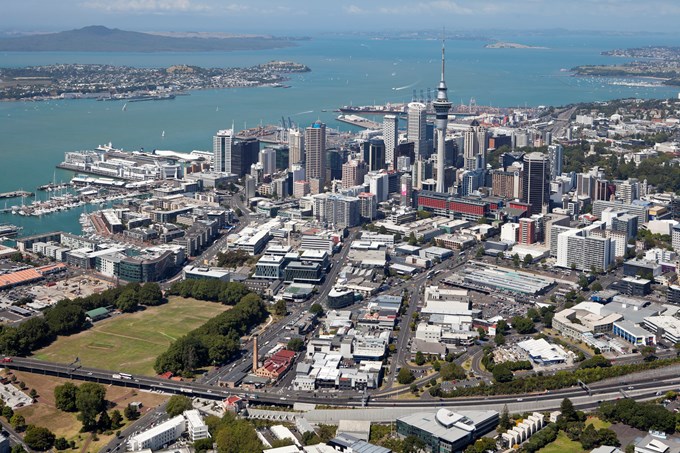Background
Extreme weather in 2023 damaged many homes across Tāmaki Makaurau, and we are working to place properties into three categories, based on a new Government risk framework:
-
Category 1– Low risk
-
Category 2– Risk can be managed with flood protection or land stabilisation
-
Category 3– High risk, house should be removed, and/or not rebuilt
During October, Auckland Council’s Governing Body made a series of key decisions on property categorisation. Decisions were guided by the council’s aim to support Aucklanders to voluntarily relocate from homes where there is a future intolerable risk to life.
We have sought to balance the financial commitments to ensure the policy is affordable for Auckland, while being fair and equitable for all affected homeowners.
WATCH: Category 3 buy-out offer explained
Category 3 buy-out offer
Auckland Council’s Governing Body agreed on 6 and 26 October 2023 how voluntary Category 3 property buy-out offers will work.
The main decisions were:
-
A pre-weather event market valuation as at 26 January 2023 will be used to determine the starting point for the voluntary buy-out offer. The valuation from a registered valuer will be organised and paid for by the council. Find out more about the valuation methodology here.
-
We will offer 95% of the value of an insured property, less any insurance payout (including EQC). This means that the property owner is making a 5% contribution towards the cost of the buyout.
-
For properties that are not insured, we will offer at least 80%, up to 95% of the value of the property. This means that the property owner is making up to a 20% contribution towards the cost of the payout.
-
The council will make a contribution towards professional services (like legal fees) as we recognise you will want to seek your own legal advice. The amount of this contribution, what this can be used for, and when it will be available, will be explained to you as part of the buy-out process.
-
Secondary properties, meaning the owner doesn’t live at the affected address (e.g. holiday homes and residential rental properties) will be eligible for a buy-out. Residential properties owned by the Crown are excluded from the buy-out scheme.
-
Vacant sections that do not have a residential dwelling on them are not eligible for a buy-out because the policy’s intent is to remove people from houses where there is a future intolerable risk to life.
A Category 3 homeowner handbook provides further information about the scheme.
Category 2 – affordability of mitigations for 2P
The Auckland Council’s Governing Body also made further policy decisions about the affordability of mitigations for properties that may be 2P, and what funding could be made available to support property owners to do the mitigation work on their property.
Part of the criteria for a property being 2P has been that mitigations on the property need to be feasible. There are two parts to figuring out if something is feasible:
-
Whether an engineering solution is technically possible. For example, whether there’s enough space to construct a retaining wall, or whether the nature of the house means it can be lifted.
-
Whether it’s affordable and if it can be delivered in a reasonable timeframe. While anything is possible if you have enough money, we needed to put a realistic cap on what could be spent on a mitigation.
The policy that’s been agreed is that mitigation affordability is set at 25% of a property’s CV.
So that means if your home has a CV of $1 million, mitigations that cost up to $250,000 are considered feasible and your home could be assigned a Category 2P. The mitigations also need to be able to be completed within two years.
The council recognises that funding mitigations to protect a home from flooding or landslide is out of reach financially for many people. Generally, insurance providers won’t cover the cost of works that are designed to reduce future events – insurance is about repairing things when they are damaged.
As the intent of the council’s policy has always been to reduce future risk to life from extreme weather events, the council has agreed to fund mitigations to 2P properties. How this will work in practice is being worked through.
It’s important to note that if your home is categorised as 2P, there will be financial support – if you need it – to help you make changes to reduce the risk on your property. As a homeowner, you’ll be responsible for getting the work done, but we will provide financial assistance.
Category 1
If your home is a category 1 and you’d like more information, please read the ‘Information for Category 1 homeowners’ in the storm recovery documents library on the council website (under ‘Terms and guidance documents’).
Disputes
A dispute resolution process (to dispute your property category and/or the market valuation) will include both an internal review and external/independent review. Details of how to raise a dispute and what you can expect from the process will be provided as part of the information we give to property owners when confirming their category.
What happens next?
Across the region, risk assessments (both flood-affected, and landslide-affected homes) are underway for properties that have opted into the categorisation process.
If you want to receive a property categorisation, we will need to complete a risk assessment. If you have not yet registered for a risk assessment process, please complete the Flooding and Landslide Registration form. The information you provide in the form will help us to begin a risk assessment for your property.
Buy-out conversations with confirmed Category 3 property owners are ongoing as properties receive confirmation of their category.
Stay up to date
Sign up to the recovery e-newsletter to get the latest updates direct to your inbox.


